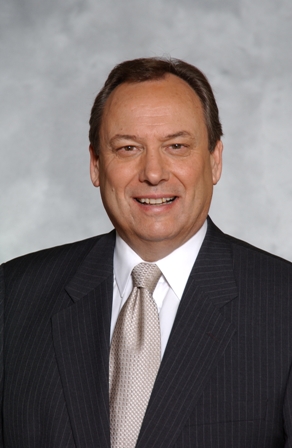Last Wednesday I featured a guest commentary is this space from State Senator Tom McClintock. Entitled Ethanol Economics, McClintock made the case against a recent decision by the California Air Resources Board to mandate that by 2010, every gallon of gasoline sold must be made up of at least 10% ethanol.
Bonus link: What is ethonal? The Wikopedia entry is here.
Today I am pleased to feature a ‘rebuttal piece’ penned by former California Secretary of State Bill . Jones, the Republican Party’s nominee for U.S. Senate a few years back, is now the Chairman of the Board of Pacific Ethanol:

By Bill Jones
Senator McClintock’s piece about the California Air Resources Board (CARB)’s decision to allow California’s gasoline blend to include up to 10 percent ethanol unfortunately took a shortsighted look at this issue and missed a few very important facts about ethanol and its potential benefits to Californians.
This decision was an important step in bolstering our state’s economy, tackling higher-than-average unemployment in rural areas, taking action to curb the rising price of gas and decreasing America’s dependence on foreign oil.
Gasoline prices have skyrocketed to well over $3/gallon for two primary reasons. First, refined gasoline is “supply limited” making it susceptible to serious price volatility. Second, crude oil is expensive because we are running out of cheap supply. On top of that, a significant “instability premium” is in full effect, adding a hidden tax to the current underlying market price.
Ethanol is the immediate solution to this problem. Today, ethanol is about 65 cents per gallon cheaper than gasoline in the California market. Allowing a 10 percent blend of ethanol into gasoline provides a 4 percent supply increase to the marketplace at a price far below current gasoline prices. Increasing ethanol use is the most effective action the state could have taken to decrease gasoline prices.
Ethanol is also free from an “instability premium” because it is produced right here in the United States. Not one marine is guarding the roads between Des Moines, Iowa, and California’s Central Valley and refineries on the Coast. In fact, CARB’s recent vote reduces our reliance on oil from overseas while increasing the state’s use of renewable fuels by 600 million gallons – making California the single largest renewable fuels market in the world. Further, it sends a signal to companies like ours to continue to invest in California production to help make this state energy independent.
No other fuel is as cheap and efficient as ethanol made primarily from corn. This year, the United States will produce its largest corn crop since World War II. As the nation’s corn production increases, so do the number of good jobs in California’s Central Valley and the Midwest. And, in due time, with all the private and public research currently underway, ethanol will also be made from additional sources such as agricultural residues or fast growing energy crops that include Eucalyptus and other species.
Arguments that the production of ethanol actually has a net-negative impact on reducing carbon emissions also do not hold true for ethanol produced in California. As the state’s largest ethanol producer, Pacific Ethanol uses state-of-the-art production practices that reduce carbon dioxide emissions by up to 40 percent compared to conventional gasoline. A key component of our business model includes producing ethanol as close to its final destination as possible. As a result, our plants achieve lower process and transportation costs by servicing local markets for both fuel and feed. By growing and refining ethanol right here in California we simultaneously boost the economy and protect our environment.
While ethanol alone does not solve climbing gas prices, world terror and sluggish economies, it is the best single tool that we can use immediately and I believe the state made the right decision to allow California’s gasoline blend to include more of it.
You can reach Secretary Jones, via the FR, here.
Care to read comments, or make your own about today’s Daily Commentary?
Just click here to go to the FR Weblog, where this Commentary has its own blog post, and where you can read and make comments.

